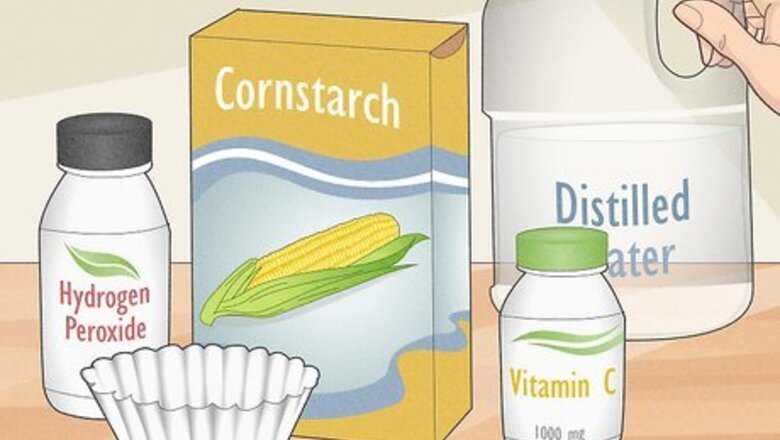
views
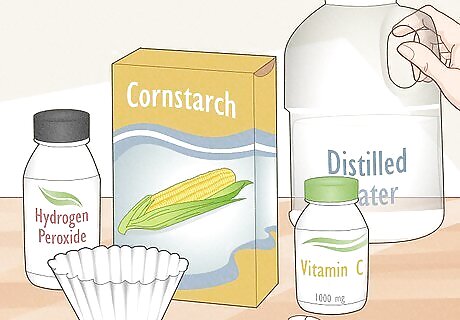
Gather the materials. You will essentially need: 10 volume hydrogen peroxide 1000 mg vitamin C tablets 5% Iodine tincture Distilled water Cornstarch Containers (preferably clear) Coffee filters
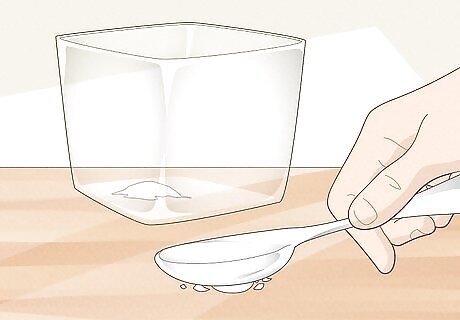
Prepare the first solution. Crush two of the vitamin C tablets with the back of a spoon until they are nearly powdery. Once that's done, put the powder into a container.
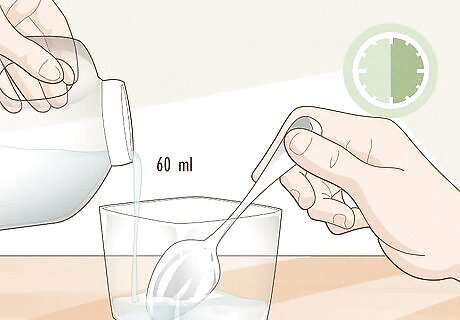
Add 60 mL of distilled water to the container with the crushed tablets, and stir for 30 seconds. Don't worry if the powder doesn't completely dissolve — this is expected to happen.
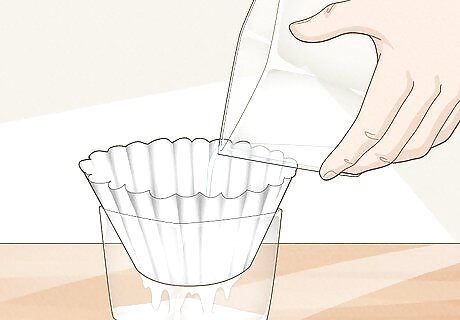
Filter the solution using a coffee filter. It is necessary to get rid of the undissolved particles so that it doesn't interfere with the experiment. Once the filtration is complete, return the liquid to its original container.
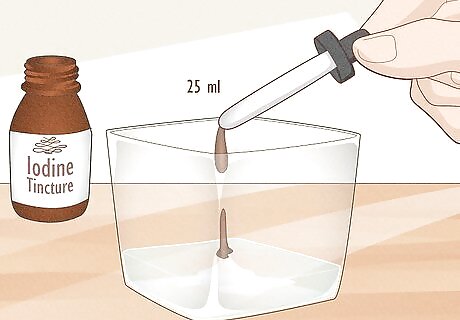
Add 25 mL of the iodine tincture to the solution. You will notice that the iodine becomes colorless — this is because the elemental iodine from the tincture breaks up into ions, forming a colorless solution. (If your solution does not turn clear, it means that you didn't put enough vitamin C, and you will need to remake the solution.)
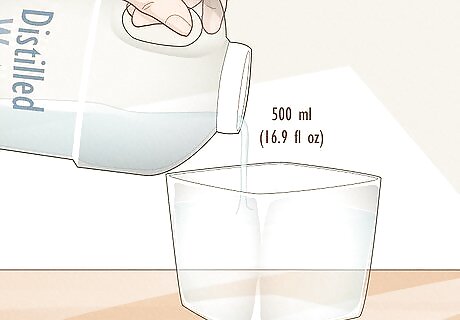
Add water to the solution until the total volume is 500 milliliters (16.9 fl oz). Your first solution is finished!
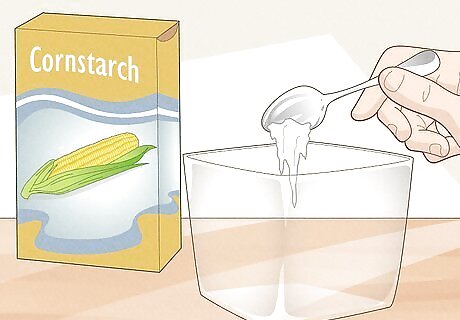
Prepare the second solution. Add a small amount of cornstarch to another container (around a teaspoon; the exact measurement isn't important).
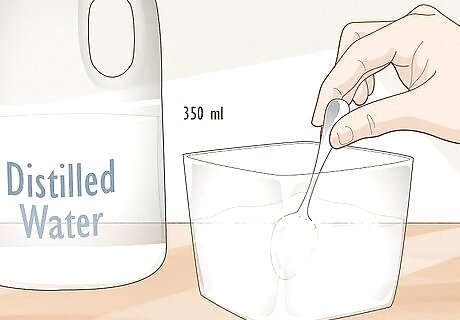
Add 350 mL of distilled water to the container, mixing it with the cornstarch. Microwave the solution until it boils to dissolve as much cornstarch as possible. The solution may look cloudy, and you can filter it to get rid of the undissolved particles. However, this is optional, and is only done to demonstrate the experiment more clearly.
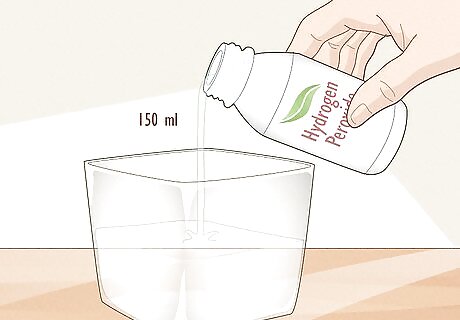
Add 150 mL of the hydrogen peroxide to the cornstarch solution. Your second solution is now complete.
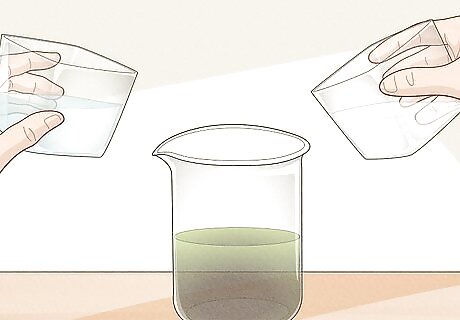
Begin the reaction! To see the iodine clock reaction in action, mix an equal amount of the first solution and the second solution into a container (you do not need to use all of the solution). Within a minute or two, the liquid should suddenly turn into a dark color. The reaction is quite complex, but what is essentially happening is that the vitamin C is consumed, reverting the iodide ions to iodine molecules, which then react with the starch to form a bluish-black hue.
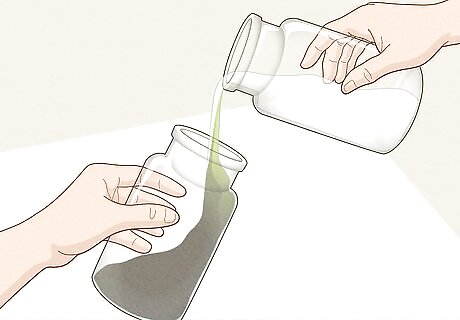
Have fun with the experiment! Try doing the reaction with different amounts, containers etc. Make some observations: Does the reaction occur faster at higher temperatures? Does the amount of solution used affect the reaction time? Will the mixture change color at the same time if you separated them into two containers?
















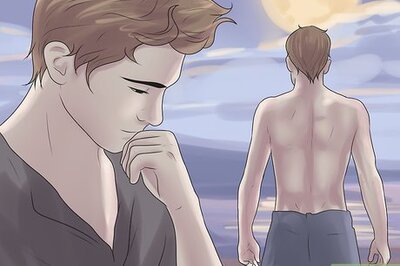
Comments
0 comment